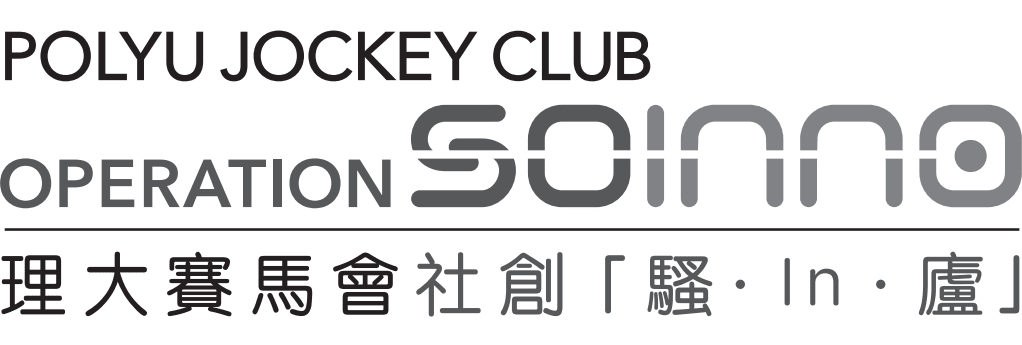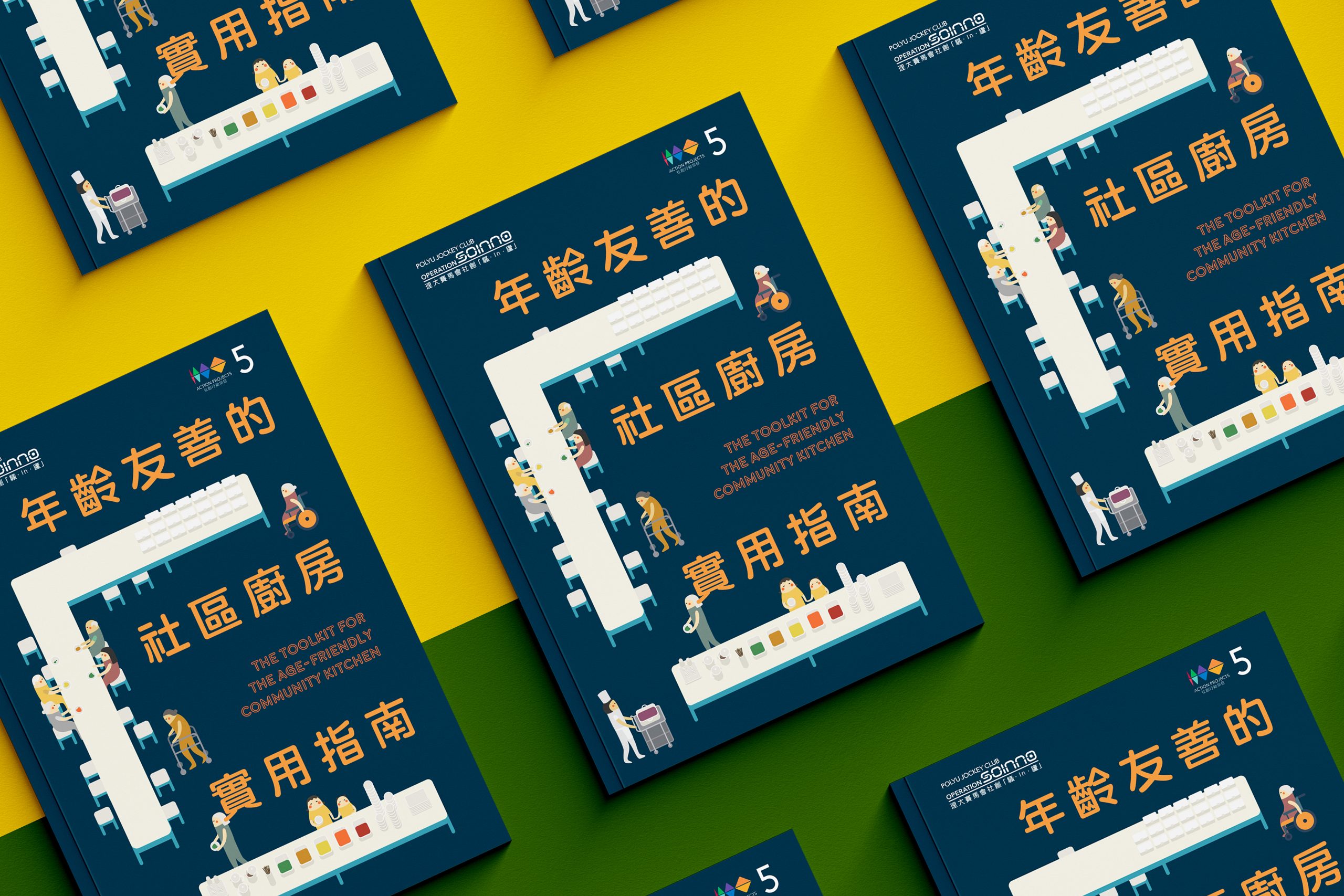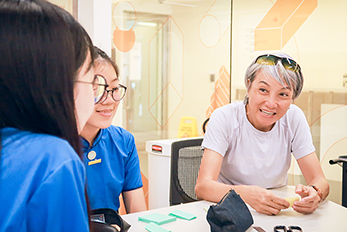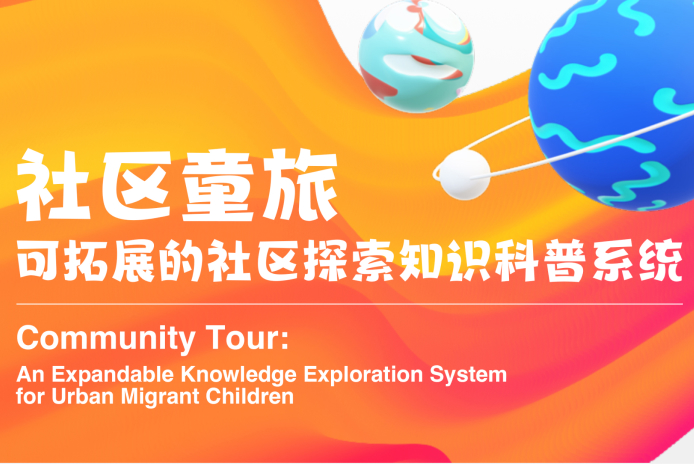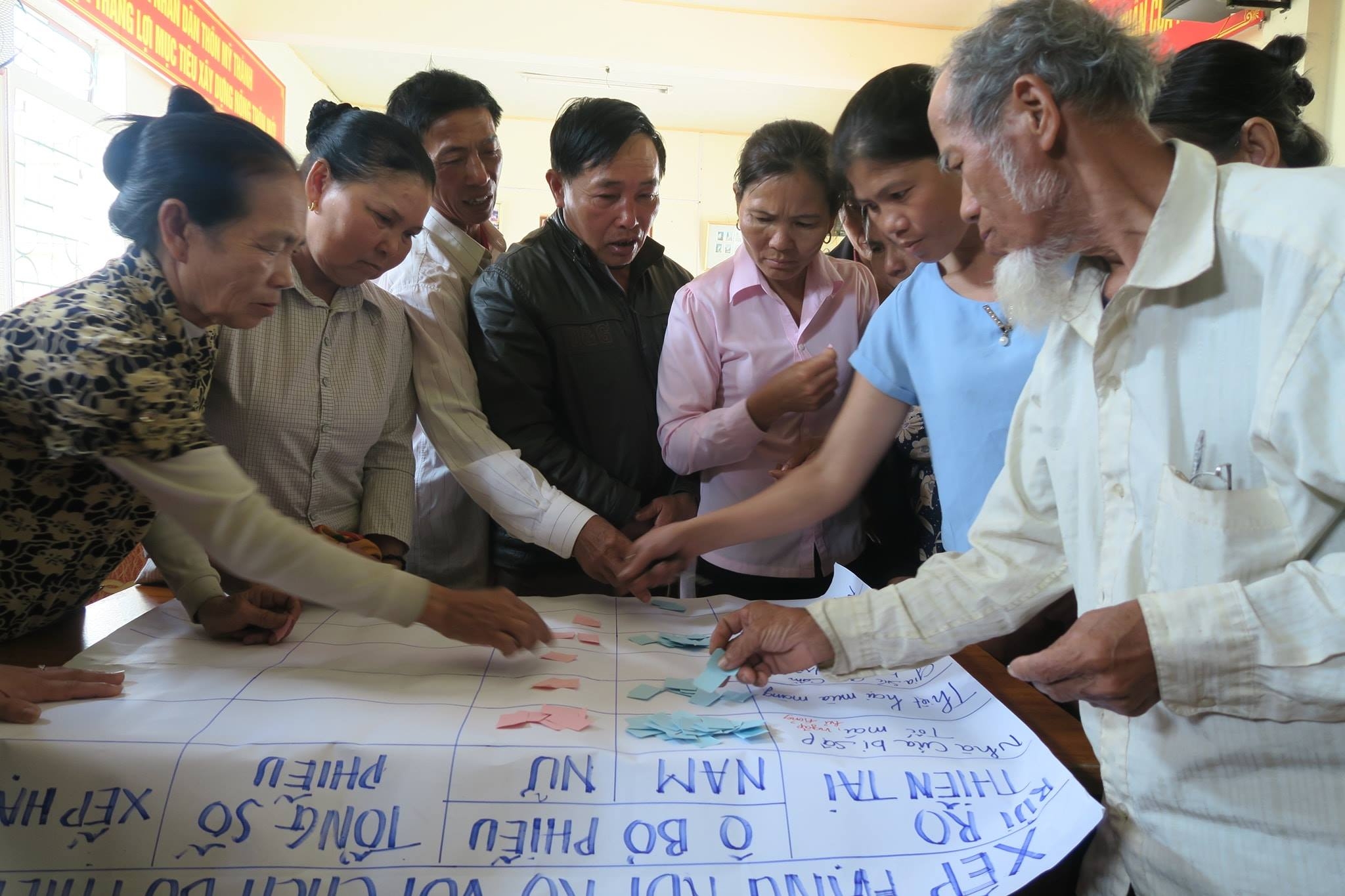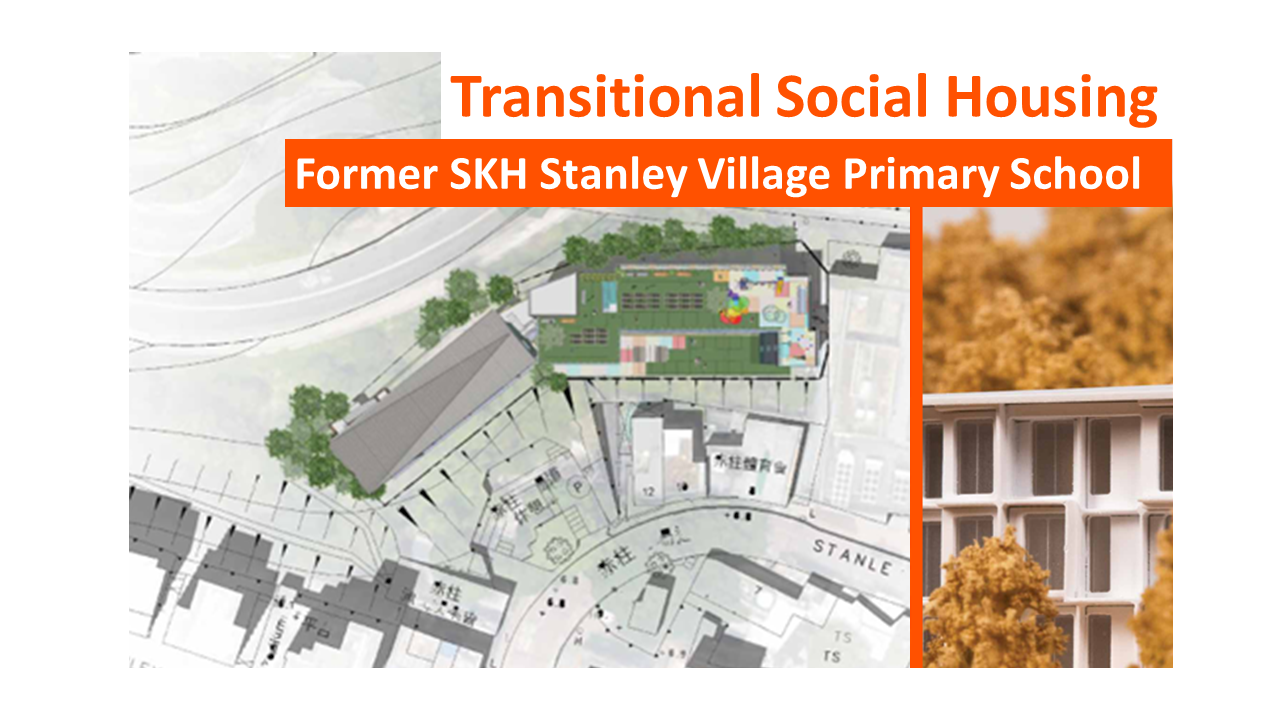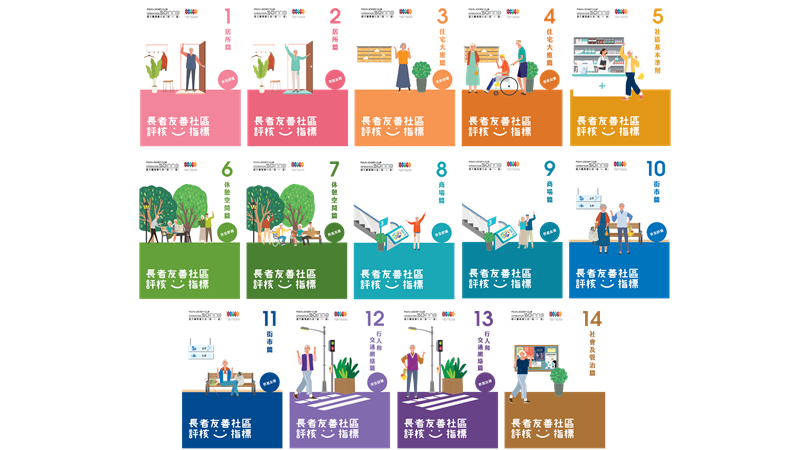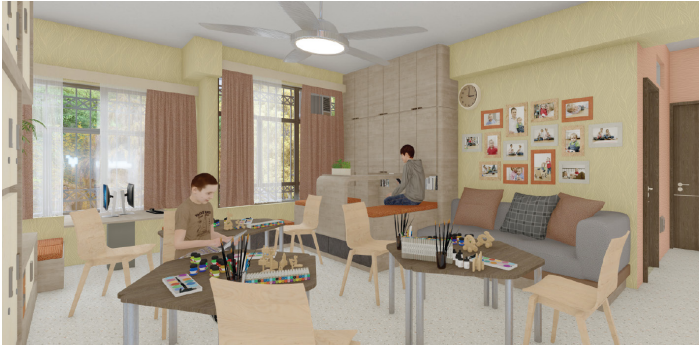With its ageing population, extended average life expectancy and a maturing workforce, it is pertinent to question whether Hong Kong local labour market is adequately prepared to address the challenges led by these demographic shifts.
Overview
The “Age-friendly Community Kitchen” action project was part of season 2 of “One from Hundred Thousand” Social Innovation Symposium, which was themed “Empathising with Elderly in Workplace”. In 2019, the Jockey Club Design Institute for Social Innovation (J.C.DISI) of The Hong Kong Polytechnic University (PolyU), the Tung Wah Group of Hospitals and the “Design for Social and Culture Business” module (SD4306) of the School of Design of PolyU collaborated on this project, with One Bite Design Studio serving as the project’s design consultant. In order to develop an age-friendly workplace and social environment, the Chan Un Chan Third Age Volunteers Centre cum Community Kitchen (hereafter the “Community Kitchen”) served as the experimental base for the project, where design thinking was adopted for optimisation. During the co-creation process, the project team proactively engaged various voices from different age groups and sectors, including those from the catering and design industries, young people, elderly persons, etc. The project resulted in the comprehensive “The Toolkit for the Age-friendly Community Kitchen”.
The phrase “to see the world in a grain of sand” is often heard, this community kitchen project was undertaken to identify the principles of an age-friendly workplace, which would in turn facilitate improvements in the employment circumstances of local elderly persons.
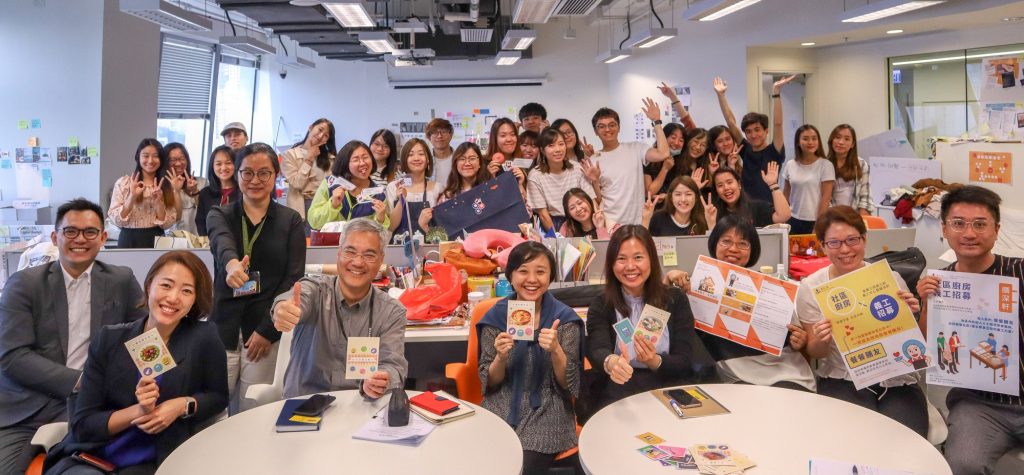
Outcomes
Assisting the older persons in integrating into the workplace requires considering different aspects compared to general home-based elderly care facilities. This is also the unique feature of the “Community Kitchen” project: the elderly are both the staff and the service recipients of the canteen. Therefore, the team must take into account various needs when considering kitchen layout, meal delivery processes, and dining experiences.
In densely populated Hong Kong, where the average life expectancy is high, there is a lack of examples of age-friendly work environments. The attempt to create an age-friendly work and dining space in “Community Kitchen” contributes to fostering a positive aging atmosphere in society in the long run. Among many workplaces, the food and beverage industry is known for its complexity and frequent safety hazards. Some of the team’s recommendations for canteen operations and space transformation are adaptable and can help other industries create age-friendly work environments.
After the study, the team compiled improvement suggestions for community kitchen operations and space usage into the “The Toolkit for the Age-friendly Community Kitchen” (hereafter the “Toolkit”) offering a total of 110 age-friendly improvement principles that can be implemented in the short, medium, and long term for industry reference. Additionally, J.C.DISI implemented 14 improvement measures for “Community Kitchen,” such as installing handrails on steps and in restrooms, attaching cane holders to dining tables, equipping chairs with swivel cushions, and designing practical uniforms for senior volunteers. These measures ensure that “Community Kitchen” is age-friendly for both staff and elderly diners.
The Occupational Safety and Health Council has also recommended the Guide to its Catering and Hospitality Services Safety and Health Committee. The Community Kitchen space transformation components and some of the tips mentioned in the Guide have been introduced in “Pamphlets of Age-friendly Catering and Transportation Industry,” a publication launched by the “Jockey Club Age-Friendly City” programme. Big Silver, a charity organization concerning age-friendliness in Hong Kong, and the Hong Kong Commercial Radio, were arranged to have interviews, to assist in promotion and publicity.
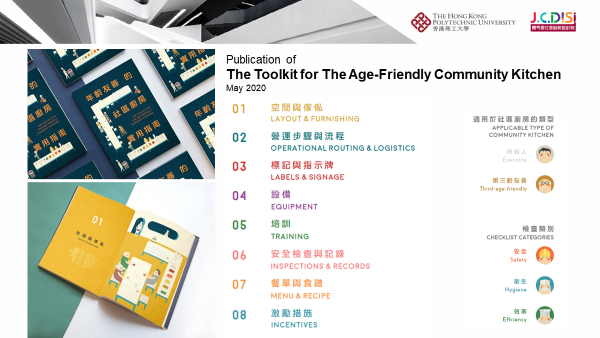
Process
Inspiration
The project team observed that following population ageing and changes in social circumstances, elderly employment is now inevitable. The workplace should also keep pace with the times, and people should acknowledge the reality of physical changes associated with ageing. For example, the kitchen work environment can easily lead to workplace injuries, and older individuals are more prone to injuries, which can be difficult to recover from quickly and may have far-reaching effects. Therefore, the team hopes to design an age-friendly community kitchen that provides a safe and comfortable space where people can gather and share joy.
Ideation
Running a meal service, the Community Kitchen is operated by the Tung Wah Group of Hospitals and serves individuals in need within the community; most beneficiaries are elderly persons. It supplies over 200 lunches and dinners for in-person service and home delivery to those in need. Meanwhile, it recruited a group of “third age” (See Note 1) retired persons over 55 to work as volunteers or staff to assist in operating the Kitchen, the canteen and the centre. Despite the small size of the Community Kitchen, its space transformation involved meticulous attention to detail, extending from the kitchen area to the dining area. The project team employed a co-creation approach to incorporate more diversified voices, identify pain points, and propose solutions.
Implementation
The project collaborated with the Social Design program, where students from the “Design for Social and Culture Business” module were divided into six groups. They began with field research to understand the operational model of “Community Kitchen” and the needs of its various stakeholders. J.C. DISI invited other stakeholders to participate throughout the process to incorporate creativity and feasibility into the project. These included professors, a consultant specialising in elderly services, professional designers, and Ginkgo House—a local social enterprise that advocates senior citizens’ employment.
These solutions covered eight main areas, namely layout and furnishing, operational routing and logistics, labels and signage, equipment, training, inspections and records, menus and recipes, as well as incentives.

It is commonly believed that the difficulty for the elderly in re-employment lies in their physical condition, but there are various solutions to compensate their special physical condition. Even small process modifications can create an age-friendly work environment. Here are some examples:
- Considering the potential fatigue that elderly persons may experience, certain mitigation measures could be introduced, for example, avoiding level changes and blocks in their meal-delivery routing, and designing a smooth, barrier-free route with the support of appropriate tools. Such solutions could help reduce the frequency of repeated journeys, thus minimising energy depletion.
- In general, the elderly have reduced visual abilities. Therefore, the project team adopted stronger colour contrasts, larger fonts, and a bigger proportion of graphics in the design of labels and signage, thereby facilitating easier reading for the visually impaired.
- In terms of back kitchen operations and catering processes, by reorganizing the placement of equipment (such as steamers and fryers) and using slip-resistant shoes with a laceless design, the safety of elderly workers in the back kitchen has already been improved.
On the other hand, the Community Kitchen project aspired to build an age-friendly dining environment. Therefore, the design of walkways and tableware has been improved according to user needs. For example, kitchen and dining area passages have been expanded to accommodate wheelchair users and those using walking aids. The dining experience is even more evident, with the team adding age-friendly tableware, such as chopsticks with assistive grips, bendable spoons and forks, cane holders on tables, and swivel seat cushions for those with mobility difficulties.
When mentioning ‘renovation,’ many people immediately think of drastic changes. However, the project team focuses on ‘practical’ and small methods, starting with measures, space utilization, and adding small tools. Additionally, the project team categorizes solutions into short, medium, and long-term, allowing interested industry participants to proceed gradually and in stages, without being overwhelmed from the start.
